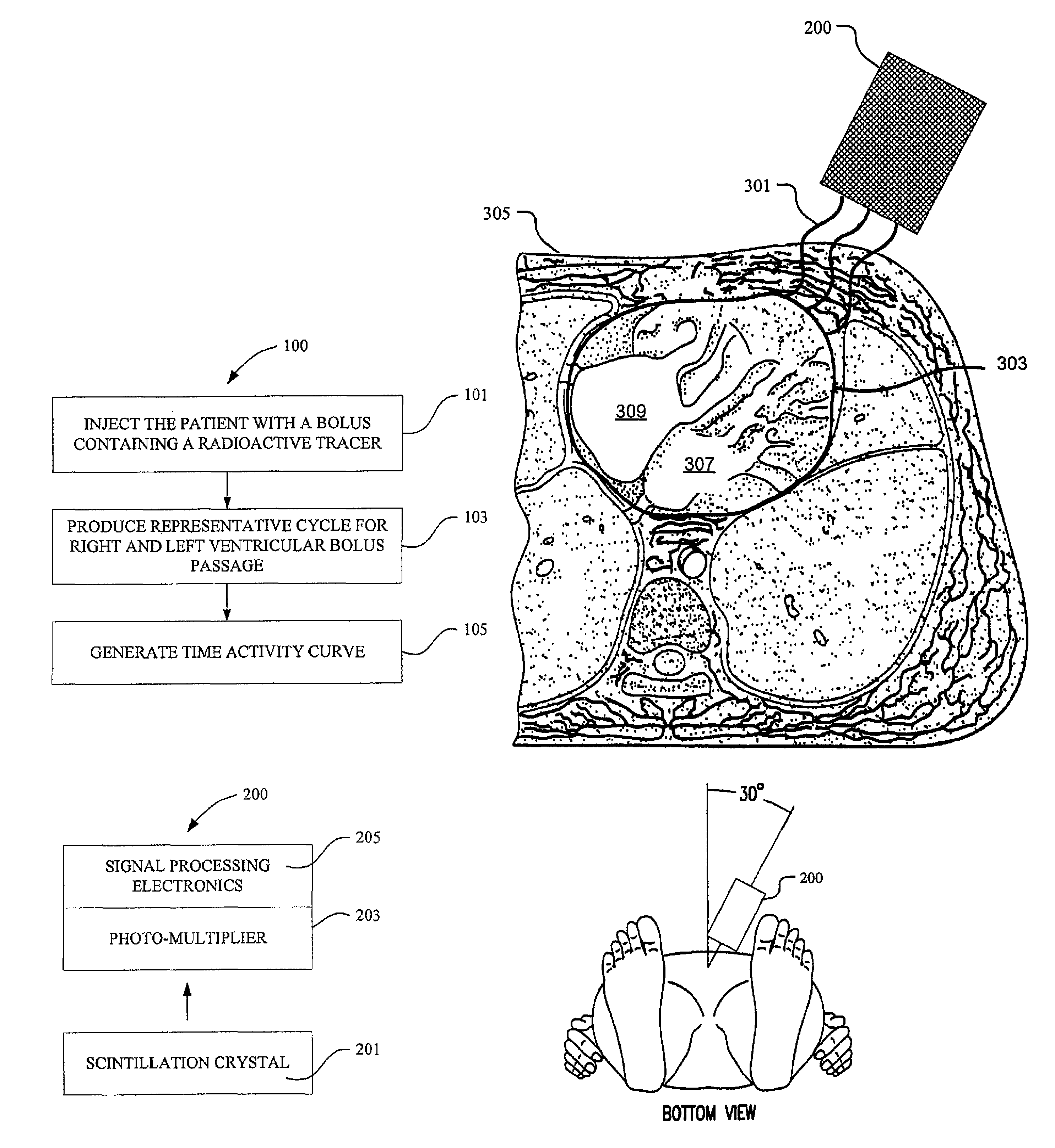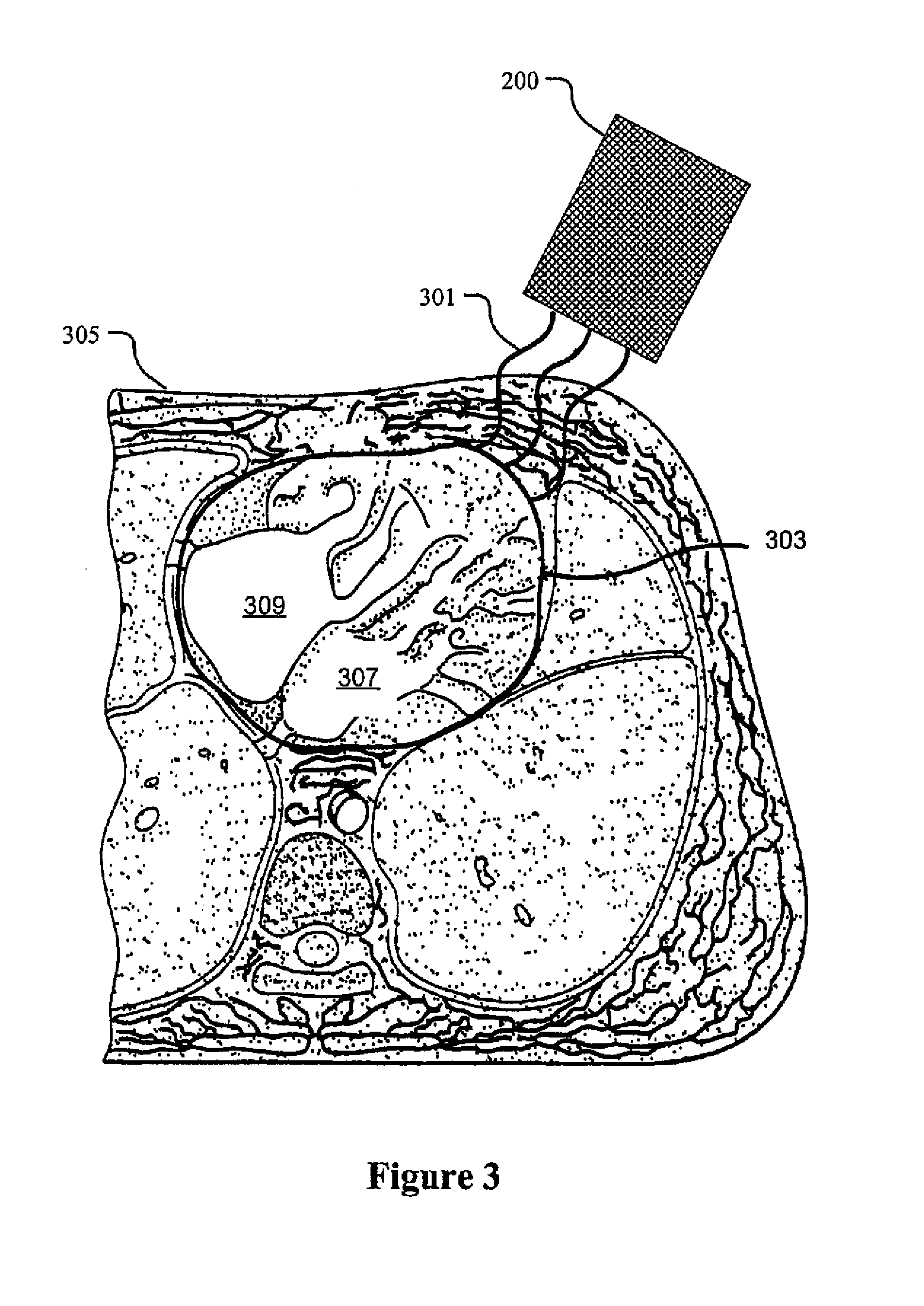System and method for imaging myocardial infarction
a technology of myocardial infarction and functional analysis, applied in the field of medical diagnostic and screening systems and methods, can solve the problems of unsatisfactory none of these strategies have produced a solution to the high incidence of death due to undetected cad, and the need for improved cardiac imaging and functional analysis systems and methods remains a tremendous unmet need, so as to reduce image distortion, minimize valve phase map distortion, and enhance valve plane delin
- Summary
- Abstract
- Description
- Claims
- Application Information
AI Technical Summary
Benefits of technology
Problems solved by technology
Method used
Image
Examples
Embodiment Construction
[0027]FIG. 1 provides a flow chart illustrating a method 100 of imaging a myocaridal infarction in a patient in accordance with one aspect of the present invention. The method involves action 101, injecting a patient with a radioactive bolus, action 103, producing a representative cycle for right ventricular bolus passage and a representative cycle for left ventricular passage, and action 105, generating a time activity curve based on activity in each segment of the respective representative cycles.
[0028]Acute myocardial infarction characteristically presents with an acute onset of severe chest pain at rest. The present method 100 is used to delineate the infarction-produced focal defect in myocardial contractility by producing a phase map of the ventricular blood flow through a patient's heart that shows the location and extent of the myocardial damage to the heart. The method 100 thus can inform a health care provider whether a patient's chest pain is due to a myocardial infarctio...
PUM
 Login to View More
Login to View More Abstract
Description
Claims
Application Information
 Login to View More
Login to View More - R&D
- Intellectual Property
- Life Sciences
- Materials
- Tech Scout
- Unparalleled Data Quality
- Higher Quality Content
- 60% Fewer Hallucinations
Browse by: Latest US Patents, China's latest patents, Technical Efficacy Thesaurus, Application Domain, Technology Topic, Popular Technical Reports.
© 2025 PatSnap. All rights reserved.Legal|Privacy policy|Modern Slavery Act Transparency Statement|Sitemap|About US| Contact US: help@patsnap.com



